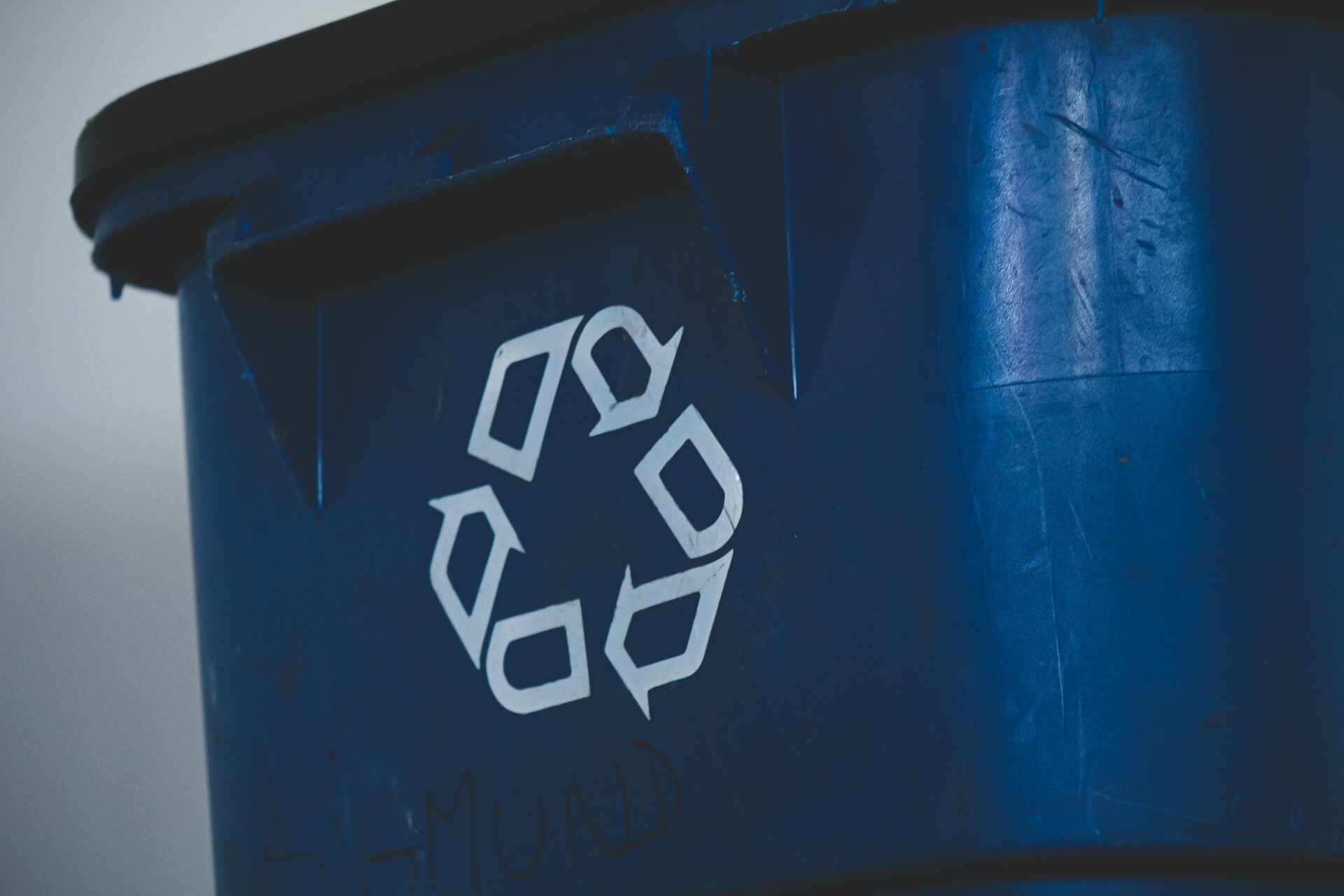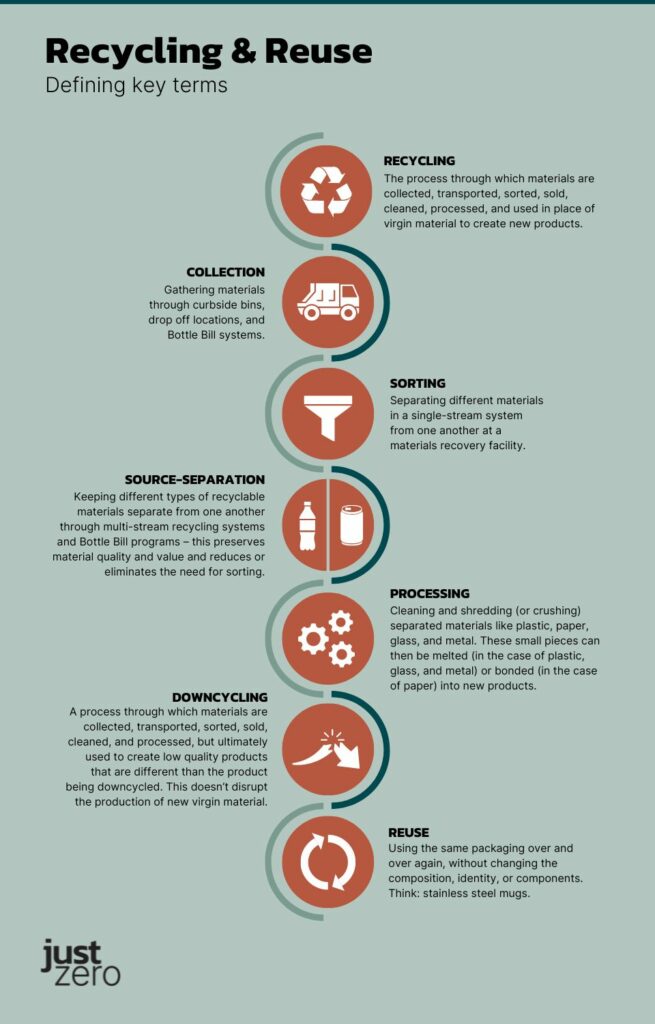
More Than Just a Curbside Bin
Recycling is easy, right? Just wash out your empty containers, break down boxes and other packaging, and throw them in your curbside recycling bin. And, just like that, mission accomplished – you recycled!
But wait, don’t pop the champagne just yet. What we often think of as recycling is just one small part of the overall recycling process. That process involves several complex and sometimes difficult steps. And, unfortunately, a lot can – and often does – go wrong at any number of those steps, especially for difficult-to-recycle materials, like plastic.
Take, for example, a plastic bottle made from #1 plastic, also known as PET. If you throw your bottle in a curbside single-stream recycling bin, it hasn’t truly been recycled until it’s been collected by a waste hauler, sorted from other materials at a materials recovery facility, sold to a processing facility, washed, shredded into fragments, melted into pellets, and then melted again and formed into a new bottle. If – and only if – your bottle makes it all the way through to become a new bottle, can it truly be deemed recycled.

Real Recycling Is Much Rarer Than We Think
Here’s the problem: If you put your plastic bottle in a curbside bin, there is almost no chance that your bottle makes it through all the steps needed for recycling. In 2021, only about 5-6% of plastic waste in the U.S. was recycled. This pitiful rate includes downcycling (turning plastic waste into low quality products without displacing virgin material). It may even include plastic waste that’s burned under the guise of so-called “advanced recycling.”
The distinction between downcycling and true recycling is critical, especially when it comes to plastic waste. When calculating recycling rates, the plastics industry, and even the U.S. Environmental Protection Agency, count plastic waste used to make items like park benches, carpet, and clothing as having been recycled. But this downcycling of materials is not true recycling. Why? Because downcycling doesn’t do anything to disrupt the production of new plastic.
Take, once again, your plastic bottle. This #1 (PET) plastic is, at least in theory, one of the more recyclable types of plastic. The National Association for PET Container Resources, a plastics trade association, claims that almost 28% of #1 plastic bottles in the U.S. are recycled. But only a fraction of those bottles are turned back into food and beverage containers. Most “recycled” bottles end up as plastic fiber for clothing, plastic film, or industrial plastic wrap. And almost one third of supposedly “recycled” bottles end up being burned or buried because of contamination or material losses.
So even if your bottle is collected, sorted, and processed, odds are it won’t become a new bottle. To make all those plastic bottles that we’re drowning in, the beverage industry keeps turning to new, non-recycled plastic. That means more fossil fuel extraction, more toxic refineries, more plastic pollution.
We Can Do Better
If most of the packaging we think we’re “recycling” never makes it all the way through the process, should we just give up? Is it time to turn our back on recycling?
Well, yes and no. There are recycling programs that still work. Bottle bills, for one, allow us to skip recycling steps like collection and sorting. Source-separated programs like bottle bills are much more likely to actually recycle that #1 plastic bottle.
It’s more and more clear that curbside recycling just isn’t getting the job done. That means we need to rethink our packaging. Instead of relying on a single-use system that was designed to keep consumers – and their money – in producers’ pockets, let’s reduce our packaging upfront and pivot to reuse.
Less packaging. Less plastic. Less waste. Less reliance on a broken recycling system. This is the world that Just Zero is working to build. Take a look at the model legislation that can help get us there. And join us as we strive for just, equitable Zero Waste solutions.